The genotypes from Human auditory ossicles as an alternative optimal source of ancient DNA, by Sirak et al. Genome Res. (2020), have been finally published by the Reich Lab, so we can get a sneak peek into what’s coming in future papers about the origins of R1a-rich Proto-Corded Ware and R1b-rich Italo-Venetic peoples.
NOTE. To avoid adding potential errors, I have merged the Reich Lab’s Curated Dataset (v. 42.4, March 1 2020) with these new samples before performing the qpAdm analyses. If you find something different with your files, you should probably check out this simple setting first. For more on comparing Steppe-related components, see here and here.
1. Late Trypillia
1.1. Proto-Corded Ware
It seems that, just as it was expected by now – that is, if you have read this blog for the past few years – Corded Ware ancestry derives from a fully Steppe-like source distinct from the typical (Pre-)Yamnaya ancestry.
The Glăvăneştii Vechi sample might not represent the population ancestral to those who spread the Corded Ware culture, but it sure looks a lot like their closest available proxy to date, based on its archaic subclade and on the fits obtained:
Interestingly, the recent paper by Immel, Țerna, et al. (2019) apparently shows the precise moment of the Trypillian dark age referred to by Mallory, when the R1a-rich Steppe-like Proto-Corded Ware community must have developed (most of) its characteristic ancestry through the admixture with dispersing Trypillian groups:
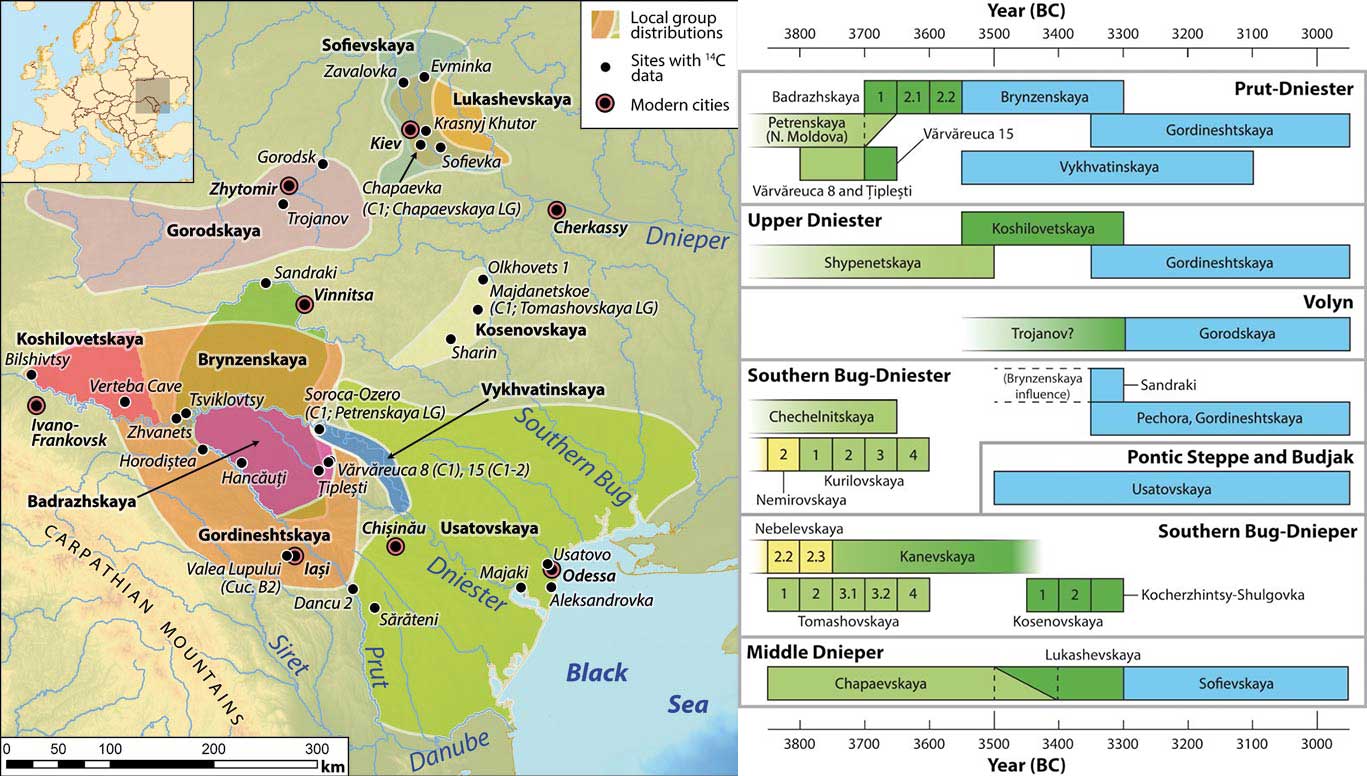
Our analyses (PCA, f3 outgroup analysis) also suggest a genetic relationship between the individuals from Moldova and those associated with the contemporaneous FBC/TRB and GAC, possibly indicating a common origin and/or ongoing interactions. The mtDNA study on the Verteba individuals already showed a high degree of similarity in the maternal lineage composition between CTC and FBC populations. This connection can be explained by the geographical proximity of the FBC and CTC distribution areas. An overlap of CTC and FBC settlements site has been documented and there is additional confirmation in the archaeological record for regular inter-group contacts and trade westwards and northwards from the CTC into the GAC and FBC areas.
Overall, the different genetic makeup of the CTC individuals presented here and in Mathieson et al. indicates a relatively high diversity, which is surprising given that they all dated to the same Late CTC period and were buried only a few hundred kilometers apart. This finding suggests population dynamics also within a culture and questions the notion of the apparently stable and uniform composition of individuals associated with a specific archaeological group.
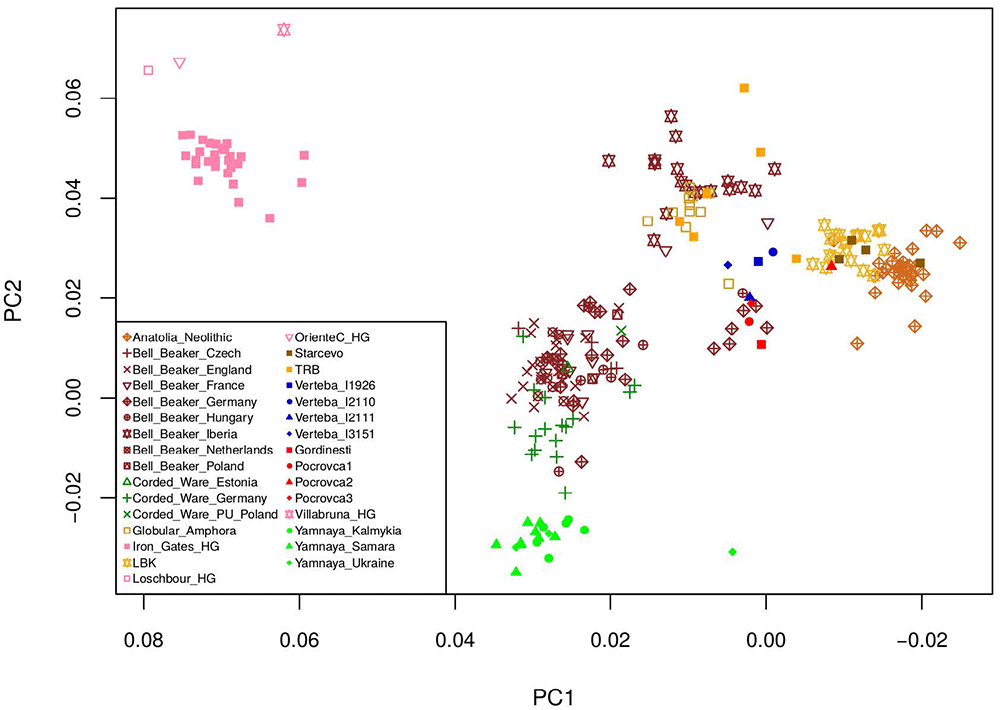
1.2. From Steppe Maykop
This Proto-Corded Ware “Steppe ancestry” derives apparently (at least in great part) from a source close to the sampled Steppe Maykop cluster, particularly to its three core (i.e. more ANE-like) samples.
Despite the position of this Late Trypillian male in the PCA, both Khvalynsk and Steppe Eneolithic must be rejected as a proxy for its ancestry:
NOTE. Obviously, the two-dimensional nature of the PCA doesn’t help distinguish between different ancestral contributions. Here is a PCA 3D of ancient and modern Eurasian samples: only those samples related to Corded Ware or earlier are coloured, and the Glăvăneştii Vechi sample is highlighted in green.
Since we still don’t have a proper geographical and temporal sampling of “Steppe-related” hunter-gatherers, all of this simplistic testing of Steppe Maykop vs. Eneolithic Steppe might be completely useless for Proto-Corded Ware peoples, once a closer proxy is published.
Nevertheless, the ultimate source appears to be clearly more closely related to western steppe hunter-gatherers than to those from the Lower Volga (such as Dzhangar or Kair-Shak), supposed by Anthony (2019) to be behind the admixture (through exogamy) of expanding Khvalynsk chieftains.
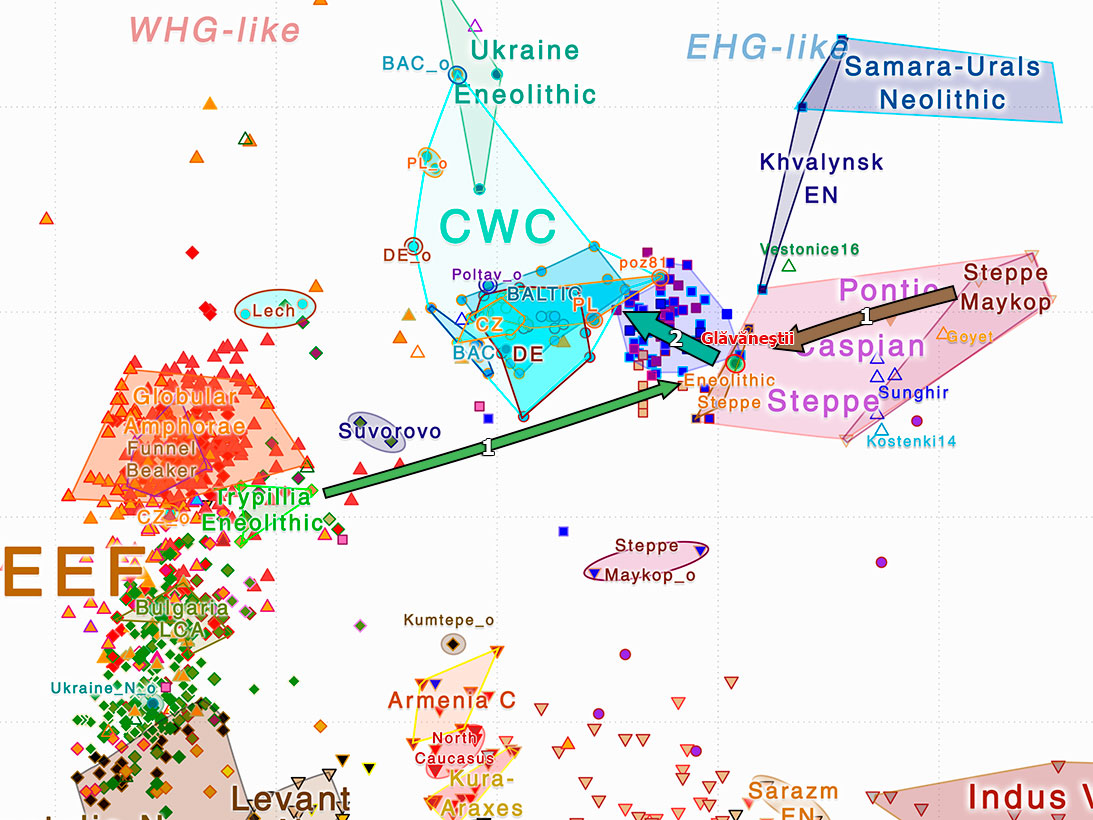
1.3. The R1a-rich community
I still expect to see an admixture event of an R1a-rich north Pontic WHG+EHG community with a population rich in “Steppe ancestry”, akin to the development of the Pre-Yamnaya ancestry after the expansion of the R1b-rich (originally EHG-like) population from the Middle Volga.
In other words, the “Steppe ancestry” proper of these Late Trypillians merely gives us the starting point of Steppe-related admixture among Uralic-speaking peoples, not the ancestral connection of Uralic and Indo-European in Eastern Europe, most likely unrelated to the formation of this CHG-related ancestry.
For more on this, read “Steppe ancestry” step by step (2019): Mesolithic to Early Bronze Age Eurasia.
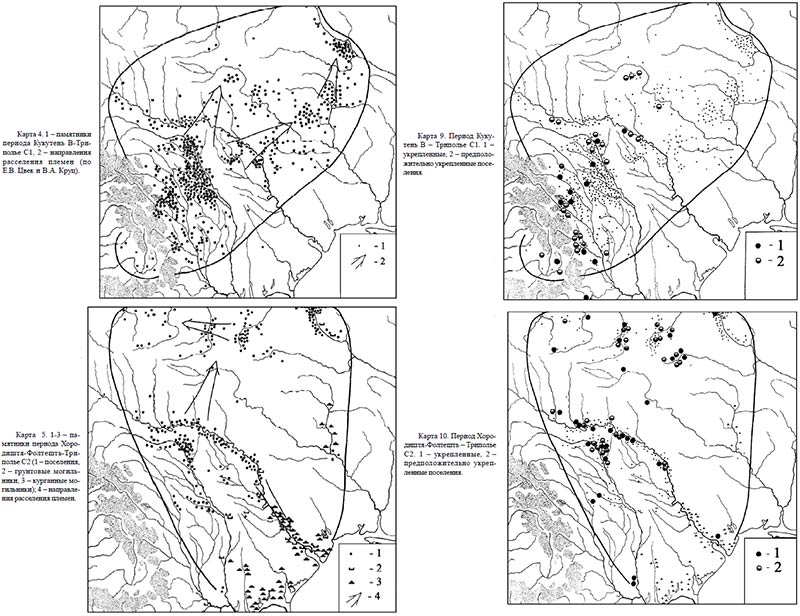
2. Palafitte-Terramare
The Palafitte-related samples from Olmo di Nogara show – to my surprise – a cluster in common with the few sampled Italy and Sicily Bell Beakers and Early Bronze Age sites, which questions my interpretation (and cherry-picking) of the more Northern-like Latins as more representative of an ancestral true Italic cluster.
While we still lack a proper transect of Bronze Age Italy beyond the Etrurian samples from Antonio et al. (2019), I think that these new Italy_MBA samples open two interesting possibilities about the “more northern” Italic cluster I selected:
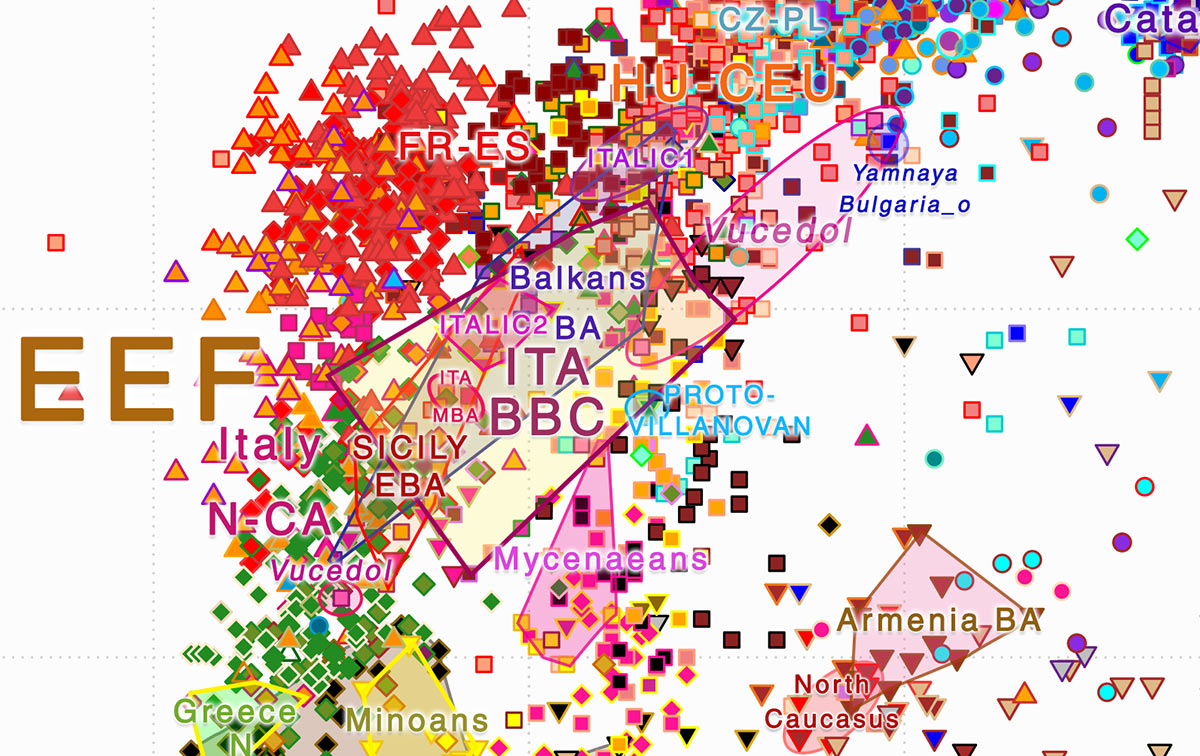
A) There is no such subgroup, and all form part of a wide BA Italo-Venetic cluster present since the Bell Beaker expansion all over the Italian Peninsula, with more or less Steppe ancestry not particularly related to a north-south cline. In that sense, it would be similar to Balkan, Central European, or Hungarian BBC/EBA groups, and would fit the guesstimated split of Italo-Venetic ca. 2000 BC.
B) This cluster shows an actual, fairly recent Northern admixture, possibly coinciding with Hallstatt-related migrations, which would then be fully unrelated to Italic, and more likely related to incoming Etruscans from the east, which would potentially connect the influence of the Proto-Villanovan culture with the Villanovan-Etruscan continuity.
Not that I would mind dismissing once again a Northern link for Indo-European languages in favour of a non-Indo-European one (see e.g. here for Aquitanians), but I really liked the idea of a relatively recent Italo-Celtic split after the Danubian EBA, despite the increasingly mainstream view that it formed a very brief common period of development.
I might be bound then for another fiasco like that of Pre-Tocharian from Afanasievo, where I expected an association with R1b-L51 based on linguistic similarities, and Late Repin turned out to show an explosive expansion of R1b-L23 subclades that makes early dialectal groups indistinguishable from each other in terms of paternal lineages…
See also
On Steppe Ancestry, Trypillia, and Corded Ware
- Earliest R1a-Z93…from Late Trypillia in the Podolian-Volhynian Upland!
- “Steppe ancestry” step by step (2019): Mesolithic to Early Bronze Age Eurasia
- Bell Beakers and Mycenaeans from Yamnaya; Corded Ware from the forest steppe
- On the Ukraine Eneolithic outlier I6561 from Alexandria
- Yamnaya replaced Europeans, but admixed heavily as they spread to Asia
On Italo-Venetic and Old European
- Italo-Venetic peoples related patrilineally to Terramare elites
- R1b-L23-rich Bell Beaker-derived Italic peoples from the West vs. Etruscans from the East
- European hydrotoponymy (V): Etruscans and Rhaetians after Italic peoples
- Sea Peoples behind Philistines were Aegeans, including R1b-M269 lineages
- European hydrotoponymy (I): Old European substrate and its relative chronology
- European hydrotoponymy (II): European hydrotoponymy (II): Basques and Iberians after Lusitanians and “Ligurians”